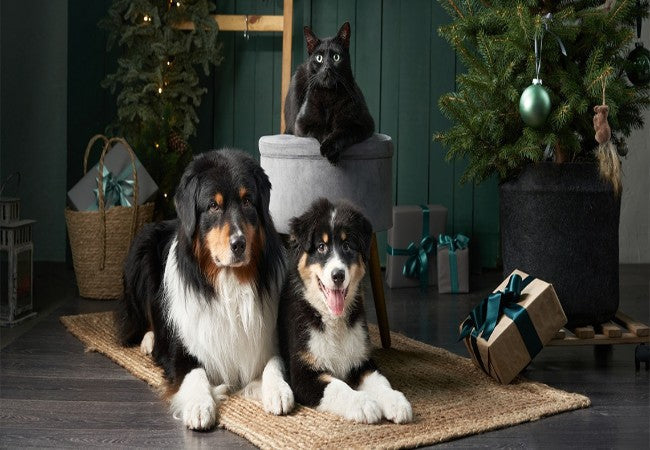In this article
📦 Vet Guide to AAFCO Pet Food Labels: What They Really Mean in 2025 🐶🐱
Pet food labels are often confusing—even to experienced pet owners. With terms like “formulated to meet AAFCO profiles” or “feeding trial tested,” it’s hard to know what’s truly meaningful. This guide, led by Dr. Duncan Houston BVSc, breaks down what AAFCO labeling really tells you (and what it doesn’t) so you can make smarter food choices for your pet in 2025. 🐾🩺
📘 What Is AAFCO?
AAFCO stands for the Association of American Feed Control Officials. It’s a voluntary group of U.S. and Canadian regulatory officials. AAFCO:
- 🧾 Creates model feed laws and nutritional profiles
- 🧠 Provides guidelines for nutrient levels to minimize malnutrition
- 🚫 Does not regulate, inspect, or approve pet food (that's the FDA’s job)
While AAFCO isn’t a regulatory body, their guidelines are widely followed and help states enforce pet food quality standards. 🧪
📝 Required Label Components (9 Total)
According to AAFCO, every pet food label must include:
- 📛 Brand and product name
- ⚖️ Net quantity
- 🏢 Manufacturer or distributor info
- 🔥 Calorie content (in kcal/kg and kcal/unit; state method used—measured or calculated)
- ✅ Nutritional adequacy statement (critical for judging quality—see below)
- 📊 Guaranteed analysis (minimum protein and fat, max moisture and fiber)
- 📃 Ingredient list (in descending order by weight)
- 🐶🐱 Species designation
- 🍽️ Feeding directions (required for all life stages if more than one stage is covered)
🔍 Understanding AAFCO Nutritional Adequacy Statements
This is the most important part of the label. It indicates whether the food provides complete and balanced nutrition—and how that was determined:
- 🧪 “Formulated to meet the AAFCO nutrient profiles for [life stage]”
- This means the diet was lab-formulated to meet AAFCO standards, not tested in feeding trials.
- 🐶 “Animal feeding tests using AAFCO procedures substantiate...”
- This means the food was actually fed to animals to confirm nutritional adequacy.
- 🧮 “Is comparable in nutritional adequacy to a product that has been substantiated...”
- Used for diets closely matched to tested ones.
- 🚫 “This product is intended for intermittent or supplemental feeding only”
- This food is not complete and balanced. Only for temporary use or therapeutic feeding.
🔬 What Are AAFCO Feeding Trials?
Feeding trials test whether a food meets nutritional needs when fed exclusively. There are different trials based on life stage:
🐕 Adult Maintenance Trials
- 8 healthy animals over 1 year old
- 6-month feeding period with no nutritional removals or deaths
- Weight monitored weekly, blood tested for 4 parameters (hemoglobin, PCV, ALP, albumin)
🐾 Puppy/Kitten Growth Trials
- 8 animals under 8 weeks old
- 10-week trial using only the tested food
- Weight, growth rate, and blood work evaluated
🐱 Reproduction Trials
- 8 adult females on second heat cycle
- Fed from estrus to 4 weeks post-partum
- Health and size of litters are monitored
❓ Are AAFCO Trials Enough?
Critics point out that a 6-month trial may not detect long-term effects seen over a pet’s lifetime. However:
- ✅ They do detect acute and semi-acute nutrient deficiencies or toxicities
- ⚠️ But they do not guarantee long-term health
- 🧪 Some companies run lifetime feeding studies—but you won’t find that on the label
📊 How Are Nutrients Measured?
- 🧪 Via lab analysis of the final food OR
- 📐 Via calculation from raw ingredients (less accurate)
No testing is required if the food is only “formulated to meet AAFCO profiles.” Ideally, a diet should meet profile standards and pass feeding trials. ✅
📋 WSAVA Pet Food Selection Checklist
The World Small Animal Veterinary Association (WSAVA) recommends asking these 8 questions when evaluating a pet food:
- 👨🔬 Does the brand employ a qualified, full-time veterinary nutritionist?
- 🧠 Who formulates the diets and what are their credentials?
- 🔬 What quality control procedures are in place?
- 📚 Is any research published or available?
- 📜 Does the label include a nutritional adequacy statement?
- 🔥 Is calorie content clearly listed?
- 📞 Is company contact info available?
- 🏭 Who actually manufactures the food?
Dr. Duncan Houston adds: Avoid “guerrilla marketing,” choose brands with proven track records, and prefer companies that disclose full nutritional profiles. 🧪
🔎 What You Can’t Tell From the Label
- 🥩 Ingredient list ≠ recipe
- 📈 Quality of ingredients isn’t disclosed
- 🔬 Bioavailability of nutrients isn’t shown
- 🧪 Whether food has been tested beyond AAFCO minimums
📲 Ask A Vet for Personalized Pet Nutrition Help
If you’re unsure which pet food is best for your dog or cat, don’t rely on the label alone. Ask a licensed vet—like Dr. Duncan Houston—via the Ask A Vet app for help. 📱🐾
Visit AskAVet.com or download the app to get expert answers to your nutrition questions—right from your phone. 📞
💬 Final Thoughts
AAFCO labels help guide pet food standards—but they don’t tell the whole story. Choose reputable brands, look beyond marketing claims, and partner with your vet to ensure your pet gets optimal nutrition. 🐶🐱❤️






